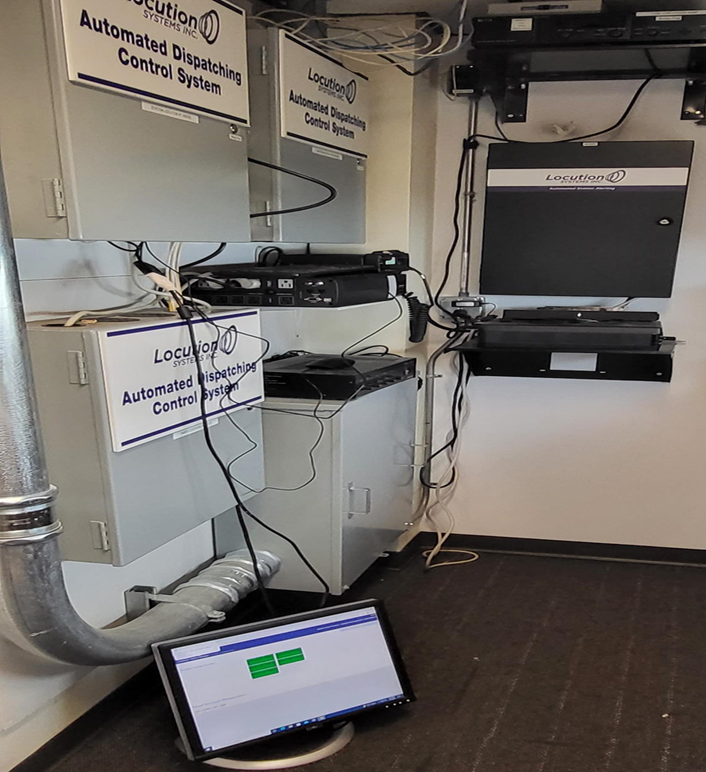Ames uses an emergency response system from 2008 that no longer displays addresses on screens at the Ames Fire Stations, and according to members of the fire department, the new system budgeted for fiscal year 2027/28 would improve real-time information updating and potentially response times.
According to Ames Fire Chief Rich Higgins, a new system could provide on-screen address displays in the stations, allow for repairs and replacements on the system when necessary and simplify the process of adding or altering addresses and personal information, resolving some issues the current system has.
Both the Ames Fire Department and Mary Greeley Medical Center operate on a station alerting system which was purchased from Locution Systems Inc. in 2008, according to the 2024-29 Ames Capital Improvement Plan (CIP).
The current system, which operates on Windows CE, a system no longer supported by Microsoft, lost the visual display of the address of the incident on screens in the stations.
The system is budgeted for a replacement in fiscal year 2027/28, with an estimated cost of $283,467, according to the CIP. During the Jan. 16 Ames City Council meeting, Higgins said the budgeted amount would cover the replacement for all three of the city’s fire stations in addition to replacements for Mary Greeley Medical Center dispatch.
In an interview with the Daily, Higgins said the main issues with the current system include the fact that repairs and replacement parts are not available due to the system’s age. The new system would allow for automatic, real-time information updates.

According to Higgins, the department can likely make it to 2028 before replacing the system since there is still an auditory alert that plays throughout the stations, but the fire chief also said if it becomes a larger issue, the CIP allows for the process to be expedited.
“So is it that big of a deal to not be able to see the address?” Higgins said. “It’s not huge, but it’s another one of those things that, sometimes you hear it, sometimes you may not hear it correctly.”
Some of the screens in the firefighter dorm rooms do not turn on entirely, while others do not display the address.
The mapping of incidents is not affected by the system, as there is another program set in place to get emergency services to the location of the incident.
According to Higgins, the current system does not negatively impact response times and said there is a chance a new system could speed up the process. Higgins believes real-time information would be a time-saver for the department.
“It does not, nope,” Higgins said when asked if the technology slows response times. “It’s still a quick system. It still gets us out the door when the call comes in from 911. So, it’s not necessarily the speed at which that information is coming through; it’s just the technology becoming updated.”
Higgins said when new addresses need to be added to the system, the department has to work with vendors to get the address manually inputted into the station alerting system. With a new system, the address could be set up the moment it “goes live.”
Ames Deputy Fire Chief Karen Tapper said the age of the current system does not delay response times, but a well-planned new system could improve them.
“We’re listening,” Tapper said. “We aren’t really stopping to read anything, so if it was right above where [the firefighters] were getting their gear on, then it would be helpful. It’s very location-dependent and what size it is, so if it’s on like a big screen like a monitor in the truck room, it would be great because then people could look up. And then also if there was like a map or something too with it, that would be great.”
Higgins said since the current system operates on fiber optics, any damage to the cables due to construction or any other factor would cause the station to not have audio or visual alerts. The department can receive the information from dispatch, but the station alerting would not operate.
“[The new system] would give us priority cellular access,” Higgins said. “That way if you lose fiber, you still have cellular backup, and then the third redundancy you’d have over the radio with the dispatch.”
The issue is mentioned in the CIP as well, stating it could delay emergency response.
“This leaves the system vulnerable to network interruptions caused by damaged fiber during construction or even a power outage at the switching station, which could result in missed dispatches and delayed emergency response,” the CIP states.













